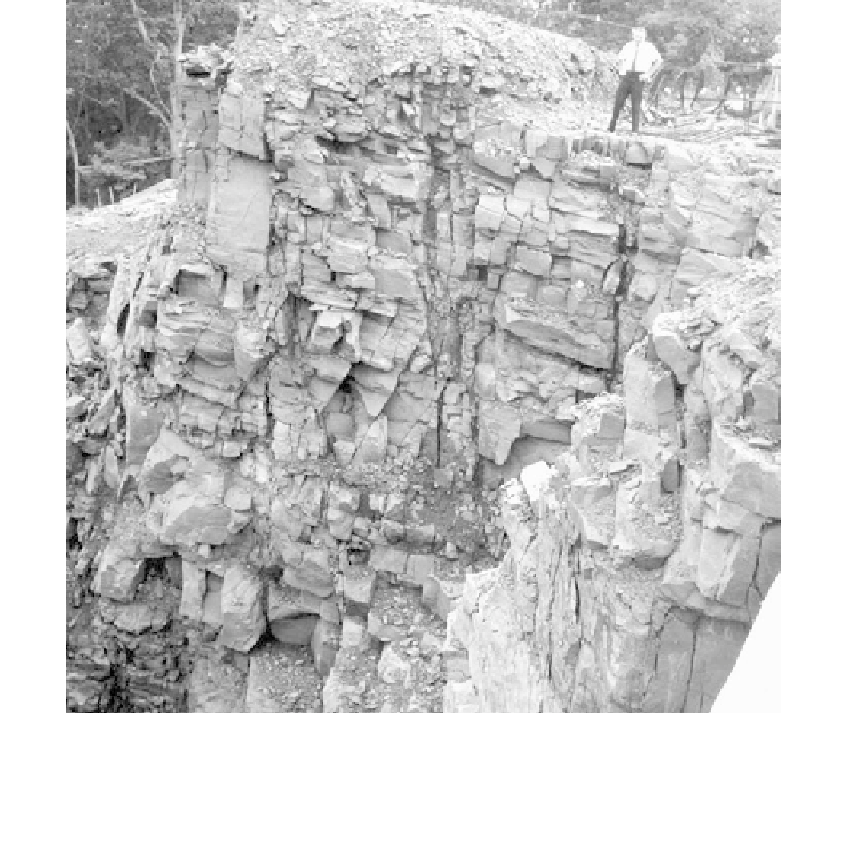Environmental Engineering Reference
In-Depth Information
FIGURE 6.47
Normal, diagonal, and longitudinal jointing, in siltstone with thin shale beds. The intense jointing was caused
by the intrusion of a sill beneath the Triassic sedimentary rocks (Montclair, New Jersey). Excavation was made
for a high-rise building.
Strength of Asperities
Small asperities of very rough surfaces may easily shear under high stresses. On a smooth
undulating surface, however, displacement occurs without shearing of the asperities.
Under low normal stresses, such as on slopes, the shearing of asperities is considered
uncommon.
Peak Shear Strength
Case 1
: General expressions for both asperity strength and the joint friction angle in
terms of normal stress are presented by Ladanyi and Archambault (1970), and Hoek and
Bray (1977).
Case 2
: An expression for joint shear strength for low normal stresses is given by Barton
(1973) as follows:
τ
σ
n
tan [
φ
JRC log
10
(JCS/
σ
n
)]
(6.1)
where
σ
n
the effective normal stress,
and JCS the joint uniaxial compressive strength of joint wall. JCS can be estimated in the
field with the Schmidt L-type Hammer (
Figure 3.1a)
as shown in
Figure 6.49.
τ
is the joint shear strength,
φ
the joint friction angle,


